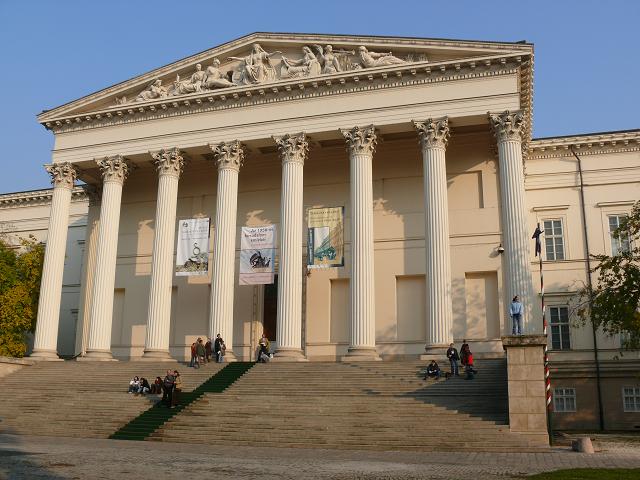|
The New Eve
''The New Eve'' (Hungarian: Az új Éva) is a painting by Hungarian artist Sándor Bortnyik from 1924. Description The picture is painted in oil on canvas and has dimensions of 48,5 x 38 cm. The picture is part of the collection of the Hungarian National Museum in Budapest Budapest (, ; ) is the capital and most populous city of Hungary. It is the ninth-largest city in the European Union by population within city limits and the second-largest city on the Danube river; the city has an estimated population ..., Hungary. Analysis In 1919, Sandor Bortnik falls among representatives of Constructivism. From 1922 to 1924 he lived in Weimar, where he met artists from the Bauhaus. Painted abstract two- and three-dimensional compositions, which subsequently adds figures and objects. In the composition "New Eve" describes an ironic ideal of "modern" man in the 1920s. Women with fashionable clothes and placed in the showroom, and can be rotated in different directions. In ... [...More Info...] [...Related Items...] OR: [Wikipedia] [Google] [Baidu] |
Sándor Bortnyik
Sándor Bortnyik (July 3, 1893 – December 31, 1976) was a Hungarian painter and graphic designer. His work was greatly influenced by Cubism, Expressionism and Constructivism. Life He moved to Weimar in 1922 and was connected to the Bauhaus. When he moved back to Hungary he founded an art school (Workshop) in Budapest, where he followed Bauhaus principles. Bortnyik is well known for his commercial posters. During his long career he worked for many Hungarian and international clients. The most famous works are the advertising images for Modiano cigarette papers. He was also the director of Hungarian Academy of Fine Arts (1949–1956). He is buried in Kerepesi Cemetery Kerepesi Cemetery (Hungarian: ''Kerepesi úti temető'' or ''Kerepesi temető'', official name: ''Fiumei úti nemzeti sírkert'', i.e. "Fiume Road National Graveyard") is the most famous cemetery in Budapest. It is one of the oldest cemeteries in .... See also *'' The New Adam'' References External li ... [...More Info...] [...Related Items...] OR: [Wikipedia] [Google] [Baidu] |
Hungarian National Museum
The Hungarian National Museum ( hu, Magyar Nemzeti Múzeum) was founded in 1802 and is the national museum for the history, art, and archaeology of Hungary, including areas not within Hungary's modern borders, such as Transylvania; it is not to be confused with the collection of international art in the Hungarian National Gallery. The museum is in Budapest VIII in a Neoclassical building, purpose-built during 1837–47 by the architect Mihály Pollack. History The Hungarian National Museum traces its foundation to 1802, when Count Ferenc Széchényi set up the National Széchényi Library. This would then be followed a year later by the donating of a mineral collection by Széchényi's wife. This led to the creation of the Hungarian National Museum as a general history and natural history museum, beyond being simply a library. In 1807, the Hungarian National Parliament passed legislation on the new institution and asked the nation to help donate to the museum. The Hungar ... [...More Info...] [...Related Items...] OR: [Wikipedia] [Google] [Baidu] |
Budapest
Budapest (, ; ) is the capital and most populous city of Hungary. It is the ninth-largest city in the European Union by population within city limits and the second-largest city on the Danube river; the city has an estimated population of 1,752,286 over a land area of about . Budapest, which is both a city and county, forms the centre of the Budapest metropolitan area, which has an area of and a population of 3,303,786; it is a primate city, constituting 33% of the population of Hungary. The history of Budapest began when an early Celtic settlement transformed into the Roman town of Aquincum, the capital of Lower Pannonia. The Hungarians arrived in the territory in the late 9th century, but the area was pillaged by the Mongols in 1241–42. Re-established Buda became one of the centres of Renaissance humanist culture by the 15th century. The Battle of Mohács, in 1526, was followed by nearly 150 years of Ottoman rule. After the reconquest of Buda in 1686, the ... [...More Info...] [...Related Items...] OR: [Wikipedia] [Google] [Baidu] |
1924 Paintings
Nineteen or 19 may refer to: * 19 (number), the natural number following 18 and preceding 20 * one of the years 19 BC, AD 19, 1919, 2019 Films * ''19'' (film), a 2001 Japanese film * ''Nineteen'' (film), a 1987 science fiction film Music * 19 (band), a Japanese pop music duo Albums * ''19'' (Adele album), 2008 * ''19'', a 2003 album by Alsou * ''19'', a 2006 album by Evan Yo * ''19'', a 2018 album by MHD * ''19'', one half of the double album ''63/19'' by Kool A.D. * ''Number Nineteen'', a 1971 album by American jazz pianist Mal Waldron * ''XIX'' (EP), a 2019 EP by 1the9 Songs * "19" (song), a 1985 song by British musician Paul Hardcastle. * "Nineteen", a song by Bad4Good from the 1992 album '' Refugee'' * "Nineteen", a song by Karma to Burn from the 2001 album ''Almost Heathen''. * "Nineteen" (song), a 2007 song by American singer Billy Ray Cyrus. * "Nineteen", a song by Tegan and Sara from the 2007 album '' The Con''. * "XIX" (song), a 2014 song by Slipknot. ... [...More Info...] [...Related Items...] OR: [Wikipedia] [Google] [Baidu] |


